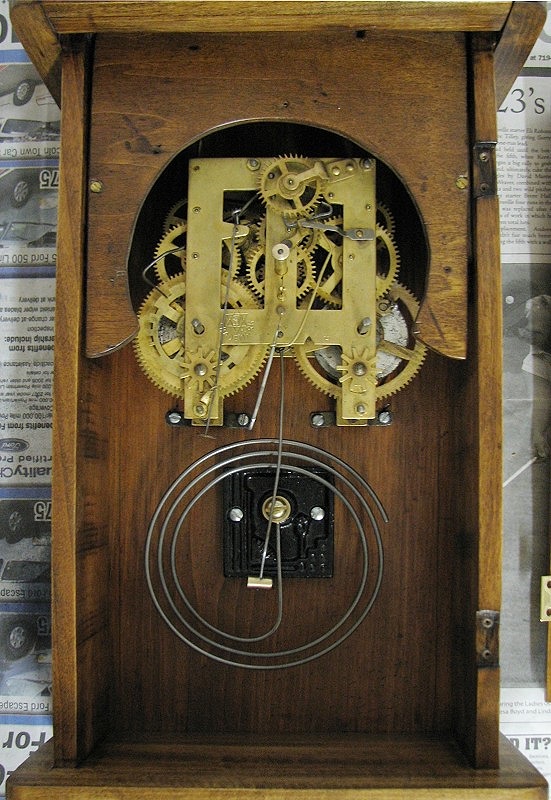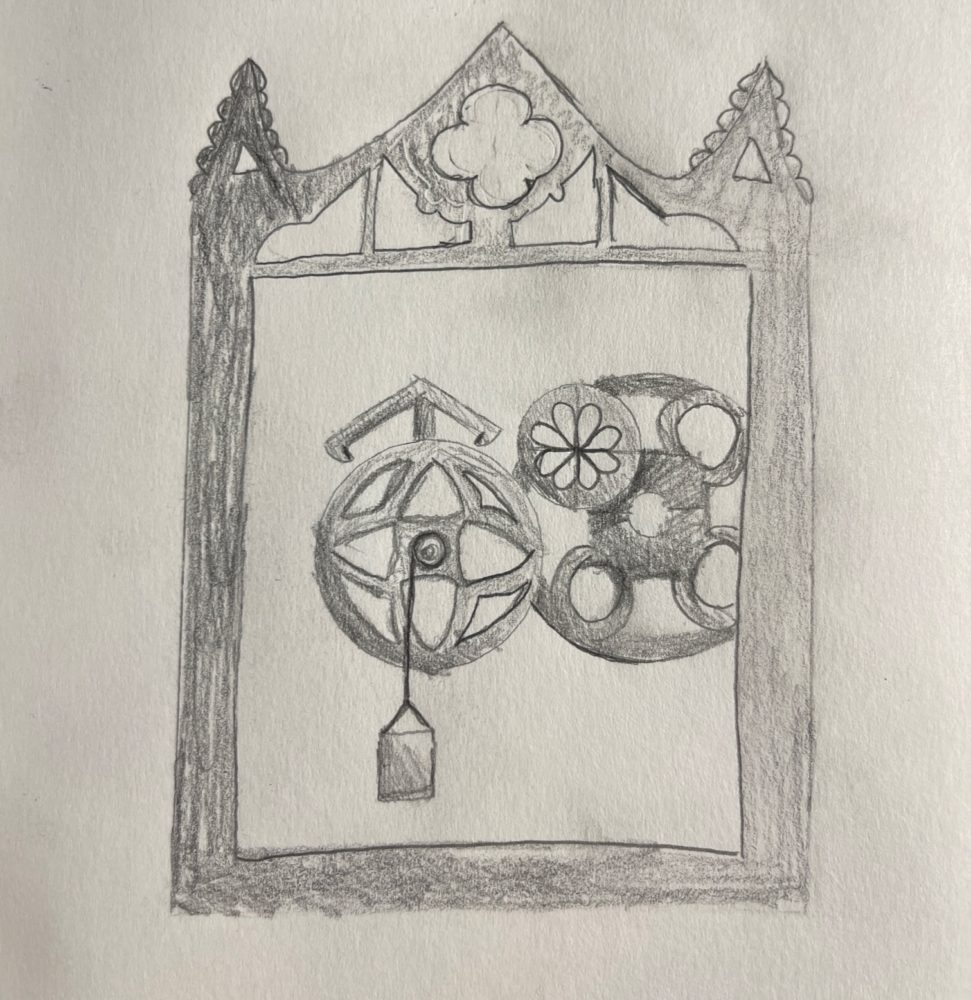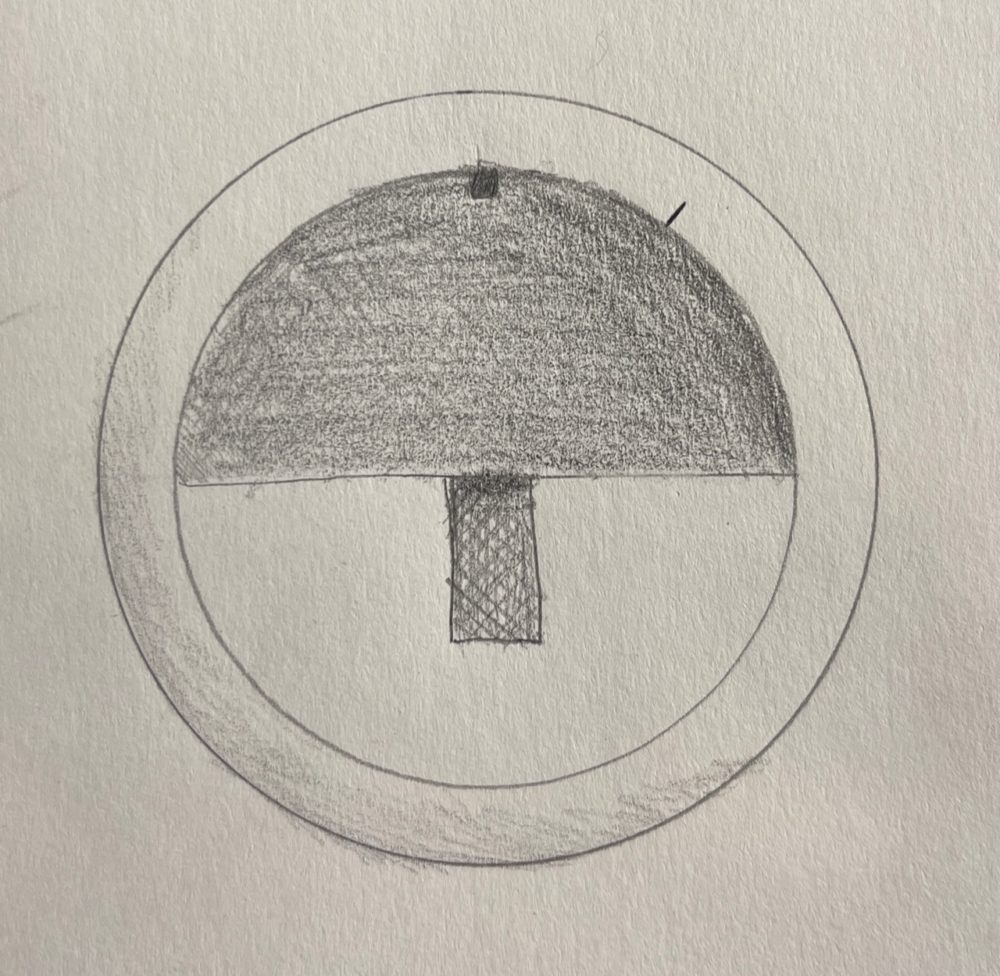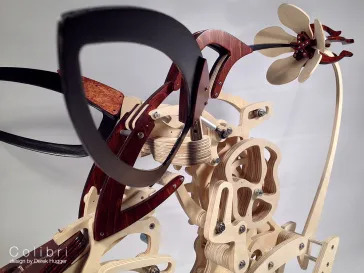

My current main project aesthetic is highly inspired by the design of kinetic sculptures and antique clocks. Potentially the most apt description of the aesthetic that I have in mind is steampunk with a heavy emphasis on wood and mechanisms, such as escapements, that can be used to turn potential energy into kinetic energy. These mechanism, and their focus on gears, has always been something that I have been interested in. However, it is important to explore other potential aesthetics. Since kinetic sculptures can be quite complex, I decided to focus on faux-clock designs. Being able to examine the aesthetic in a more simple form will allow me to better determine if I want to change direction, or if there are elements that I would like to implement.
I chose two very different aesthetics for my exploration: Gothic Revival and Minimalism. Neither of these are related to my target aesthetic, and will thus provide a good contrast.
Gothic Revival


Gothic Revival was an aesthetic movement that lasted until 1880. It focused on the inclusion of quatrefoils, tall pointed arches, crosses, dark color palettes, and shadows. This aesthetic can still be seen in many cathedrals. It was typically associated with exuberance and expressions of wealth.
With this aesthetic, I would ensure that the escapement mechanism had a housing and that each gear had some intricate shape. I would also focus more on how light and shadow influence the perception of the mechanism. While this aesthetic is more ornamented than I was originally envisioning for my project, I do enjoy the idea of having more intricate details or cut outs in the gears. I think it presents a very interesting alternative to the standard flat, unornamented, gears that are commonplace.
Minimalism


Minimalism began following World War II and it seeks to reduce a subject to its necessary elements. This often means reducing products down to basic geometric shapes, muted colors, and unornamented faces. This aesthetic is particularly interesting from an investigation point because it directly clashes with what my original idea was.
My original ideas for the aesthetic I had chosen tended toward minimalism to display overly intricate and complex mechanical mechanisms. I think that it is valuable to take a step back to examine how the same idea could be implemented in a minimalist aesthetic. Since I am focusing more on clock aesthetics, I decided to keep the escapement mechanism but hide it behind a half-circle of wood. The weight would become visible as it drops, but the actual motion of gears and the internal mechanisms would be hidden. Instead, the motion would be communicated by rotating the outer ring. While I do not think that I will change my aesthetic to hide the gear mechanisms, I do actually enjoy the look of a more minimalist approach. I particularly like having the outer rotating ring as it adds movement in a way that differs from a lot of conventional clocks or kinetic sculptures. I think that also having a more toned down an simple ornamentation can be pleasing, especially for the outer components. Since I want to draw attention to the gears, I will take a more minimalist approach in areas where I want to direct focus away from.


4 Comments. Leave new
Hi Palmer, this was an interesting view of how this project could have gone differently. I think it would be an interesting challenge to demonstrate an escapement mechanism in the form of minimalism, an aesthetic that almost forbids exposed mechanisms and complexities. It would be interesting to see a minimalistic approach where the project is the mechanism and nothing else, no extraneous parts or functions. I think this project would have fit the Gothic Revival aesthetic very well with your inspiration being antique clocks. It is interesting you said you want to avoid ornamentation when in my mind I envision steampunk being even more exuberant in its ornamentation than Gothic. Is it a particular type of ornamentation or excess decoration you are trying to avoid?
Hi Nic, I think that you are right on the minimalistic approach. I was struggling to actually fit it into the minimalism approach without covering the mechanism, but I do think that there is potential to create a minimalistic escapement mechanism. When I mentioned in my post that I was trying to avoid excess ornamentation I was talking more about the enclosure or fitments for the gears. I didn’t necessarily want a heavily ornamented box or frame because I am worried that it will take the focus away from the actual mechanical design and the aesthetic of exposed gears and cogs. In that respect, I was envisioning that there may be ornamentation or decoration on the gears themselves, but the structure around the gears would be relatively plain other than maybe a few curves.
I really love the gothic revival style and the way that its time-honored motifs can be applied anywhere from architecture to furniture to engravings. I also really love the choice you made to produce something very engineering-focused and mechanical with this as well. The contrast of the gothic aesthetic with modernism provides a very interesting window into how aesthetic choices can so wildly change the outcome of a project. I am also excited to see how your target aesthetic develops and influences your design as your design path also influences aesthetic choices!
Thank you! I think that the gothic aesthetic would actually work quite well for this project, even though it is not quite what I am going for. I am a bit worried about the amount of modeling and then assembly that I will have to do for this project, but I am excited for the challenge to integrate the focus on aesthetics with the mechanical design.